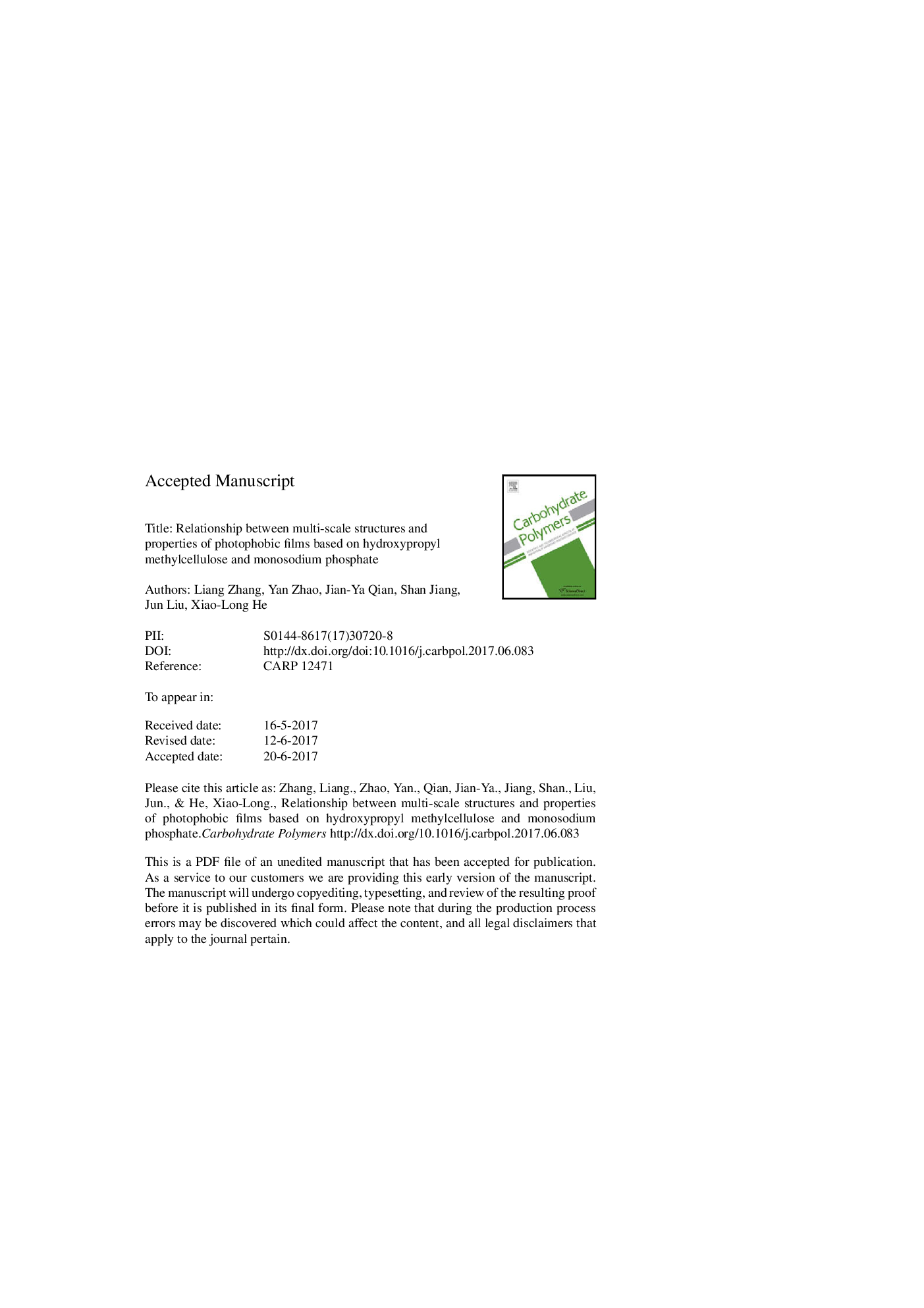| Article ID | Journal | Published Year | Pages | File Type |
|---|---|---|---|---|
| 5156843 | Carbohydrate Polymers | 2017 | 28 Pages |
Abstract
Photophobic (white) films were prepared with hydroxypropyl methylcellulose (HPMC) and monosodium phosphate (NaH2PO4) to overcome the redox reaction induced by titanium dioxide photocatalysis of HPMC/TiO2 white film. What's more, HPMC/NaH2PO4 white film could overcome the drying temperature dependent property of white films based on HPMC and calcium salts. Attenuated total reflection Fourier transform infrared spectroscopy, wide angel X-ray diffraction, small angle X-ray scattering, scanning electron microscope and texture analyzer were used to investigate the effect of NaH2PO4 on the short-range, supra-molecular structures and properties of HPMC film. The formation mechanism of the white film was speculated by analyzing the structures of different scales. The results showed that the interaction might happen between H2PO4â1 group of NaH2PO4 and CH, CH2 and CH3 group of HPMC. These interactions influenced the polymer chain movement and combination and further affected the aggregation structures. Specifically, the compactness, smoothness and scale range of the surface fractal scatters in films increased and elongated particles of two scales appeared. These changes of ordered structure in the micro-region might contribute to increasing the reflected light and decreasing the transmission light of films, resulting in white films with photophobic property. The addition of NaH2PO4 decreased the crystallinity and smoothness of the cross-section of HPMC film, which resulted in a little lower tensile strength, elongation and elastic modulus of HPMC/NaH2PO4 films. Films of less than 10% of NaH2PO4 showed similar mechanical properties with pure HPMC film, which offered proper parameters for the production of HPMC/NaH2PO4 photophobic films in the application.
Keywords
Related Topics
Physical Sciences and Engineering
Chemistry
Organic Chemistry
Authors
Liang Zhang, Yan Zhao, Jian-Ya Qian, Shan Jiang, Jun Liu, Xiao-Long He,
